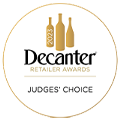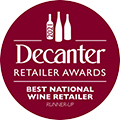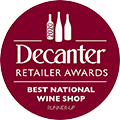Alongside Châteauneuf-du-Pape and Chablis it is perhaps one of the best-known names in the lexicon of wine. However, many folk would be hard pushed to place it exactly on the map. Yes, it’s a French wine but… from where exactly?
Students in the wine world, merchants and sommeliers will all have a go at putting it in the Loire Valley, and many know that it’s actually in the ‘Central Vineyards’ part of that illustrious region, but a long way inland, many kilometres from Nantes, Saumur and even Orleans. In fact, Sancerre nestles an hour due south of Paris, and rather closer to Chablis than even the experts would think.
That’s where a lot of similarities between Sancerre and Chablis start, as is apparent when you visit. Although Sancerre is a pretty town on top of a hill, and Chablis is a pretty town down in the valley, both are surrounded by their vineyards with a river running through. If you gaze out from a viewpoint, you’ll see a sea of vines marching up and down slope-y fields, tracks running from bottom to top as the workers drive to their particular parcel of vines. These vineyards surround you, creating much more of a patchwork than you’d witness in, say, Bordeaux. The slopes and valleys dip maybe 50 to 100 metres, many at 45 degrees. This variation helps to give each location and aspect a different feel, contributing to a wine’s fingerprint ‘terroir’ as a grower will tell you. And both regions produce sublime white wines.
Of course, the main difference between Chablis and Sancerre is the grape variety. In Chablis it is Chardonnay, while in Sancerre we are talking about Sauvignon Blanc. It is the cool, fresh, fruity flavours of this grape which has made it a hit all over the world and propelled it to the top of the ‘recognisable’ wine words tree. Sancerre made its name in Paris centuries ago. It was accessible, it had the fruity character we know and love today; gooseberry, passionfruit, elderflower and more, and quaffed easily in the bistros and high society of Parisian life. Never labelled as Sauvignon, that’s more of an Antipodean, ‘New World’ thing, it was actually the sophistication and elegance, the more understated herby side of Sauvignon Blanc that has appealed to so many drinkers and still does. Possibly the finest I’ve tried is from Etienne Roger who’s Grand Chemarin 2018 is a wine of beauty and grace.
You’ll find Sancerre widely available in the UK, but not all are the same. While it is not easy to make a bad wine these days (faults like cork taint excepted), there are levels of quality that mean a cheaper, co-operative made bottle will probably taste inferior to that of a ‘Domaine’ grower. Then, like many other areas of wine growing in France, Italy and beyond, there are the better bits and the best bits of particular vineyards, particular slopes. On a recent visit we managed to taste 12 different Sancerres from three producers, all of which had an individual flavour with varying intensity and concentration, depending on where they had been grown.
Most important is the soil make-up; it varies, and hugely influences the taste of each wine. If you could hover above Sancerre you would see a geological fault line that runs north-south straight through the town of Sancerre. To the west the soil is a mixture of limestone and clay, typical of many regions and making balanced but fuller, fruitier wines. To the east of the fault line there is more flint and chalk which imparts a crisper, lemony character with zip and brisk acidity. The flint can even give a ’gun-flint’ edge as you’d find if you strike a flint with steel to get a spark. Much more obvious in neighbouring Pouilly Fumé, there is however that spark to be found in the ‘silex’ of Sancerre.
We dined well during our visit, and the perfect match, when the heat was 30 degrees, was a goat’s cheese salad, or a simple goat’s cheese omelette – in fact anything cheesy worked brilliantly, even a pizza, as did some plain, grilled fish with a squeeze of lemon. Sancerre is truly a high-class summer white with poise and elegance, a must for the Sauvignon lover.
As a postscript I’ll add that we also tried a raft of red Pinot Noirs which have become much more available in recent years, and more delicious to my mind as Sancerre has warmed a degree or so in modern times to give riper, juicier red fruit. With the price of red Burgundy racing away it’s worth considering these classically made alternatives particularly from a warmer vintage like 2020 or 2022. They are an excellent substitute.




































